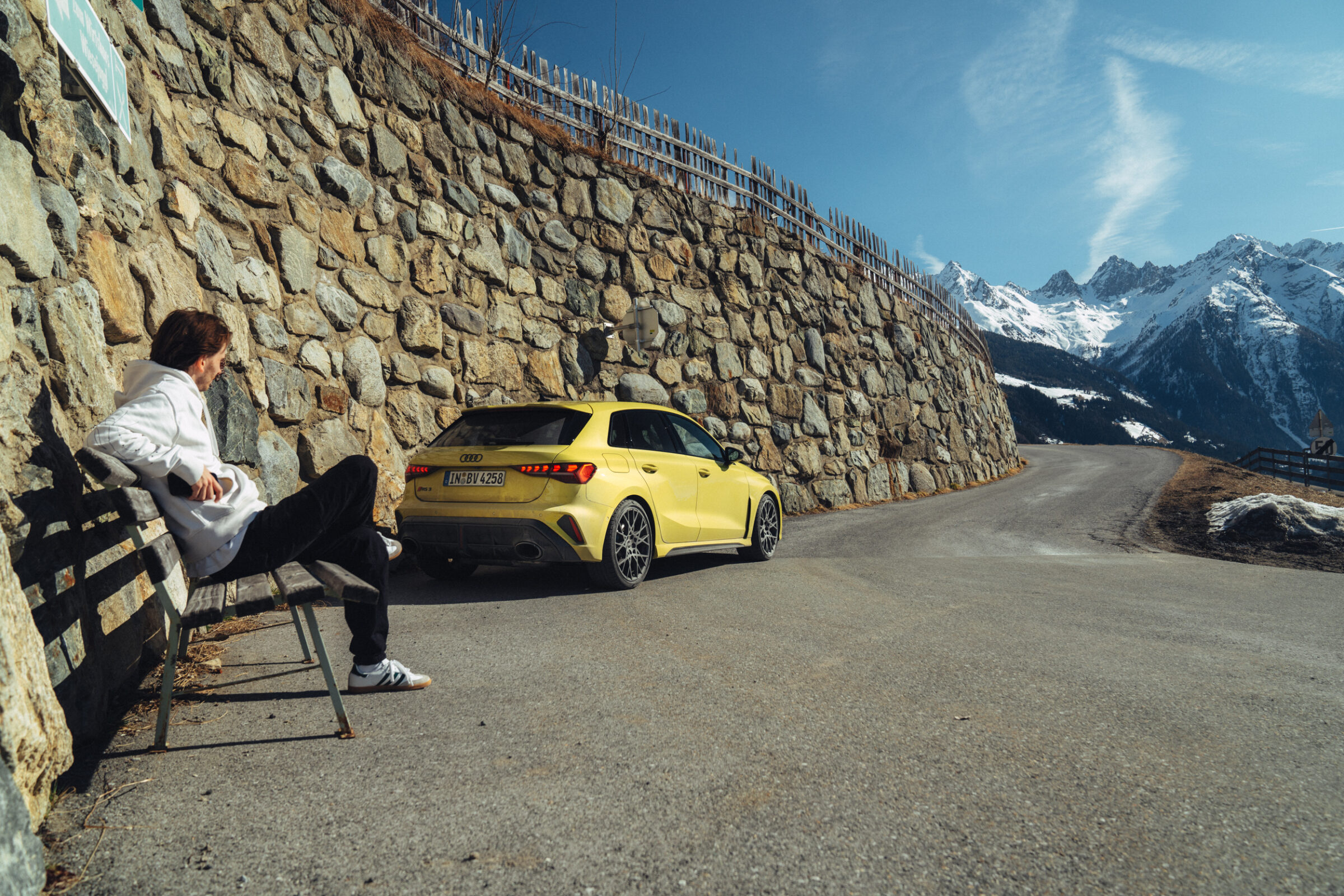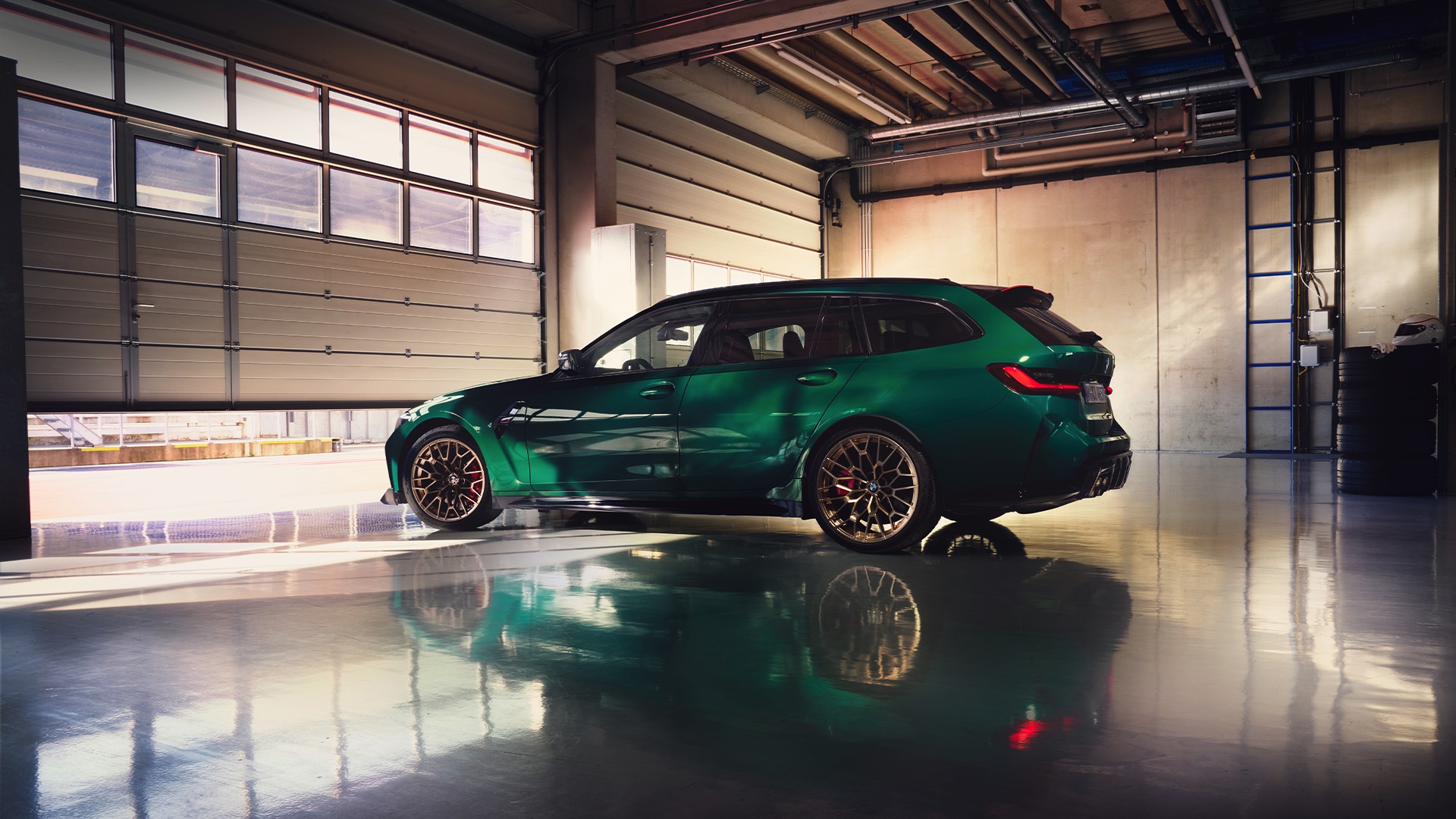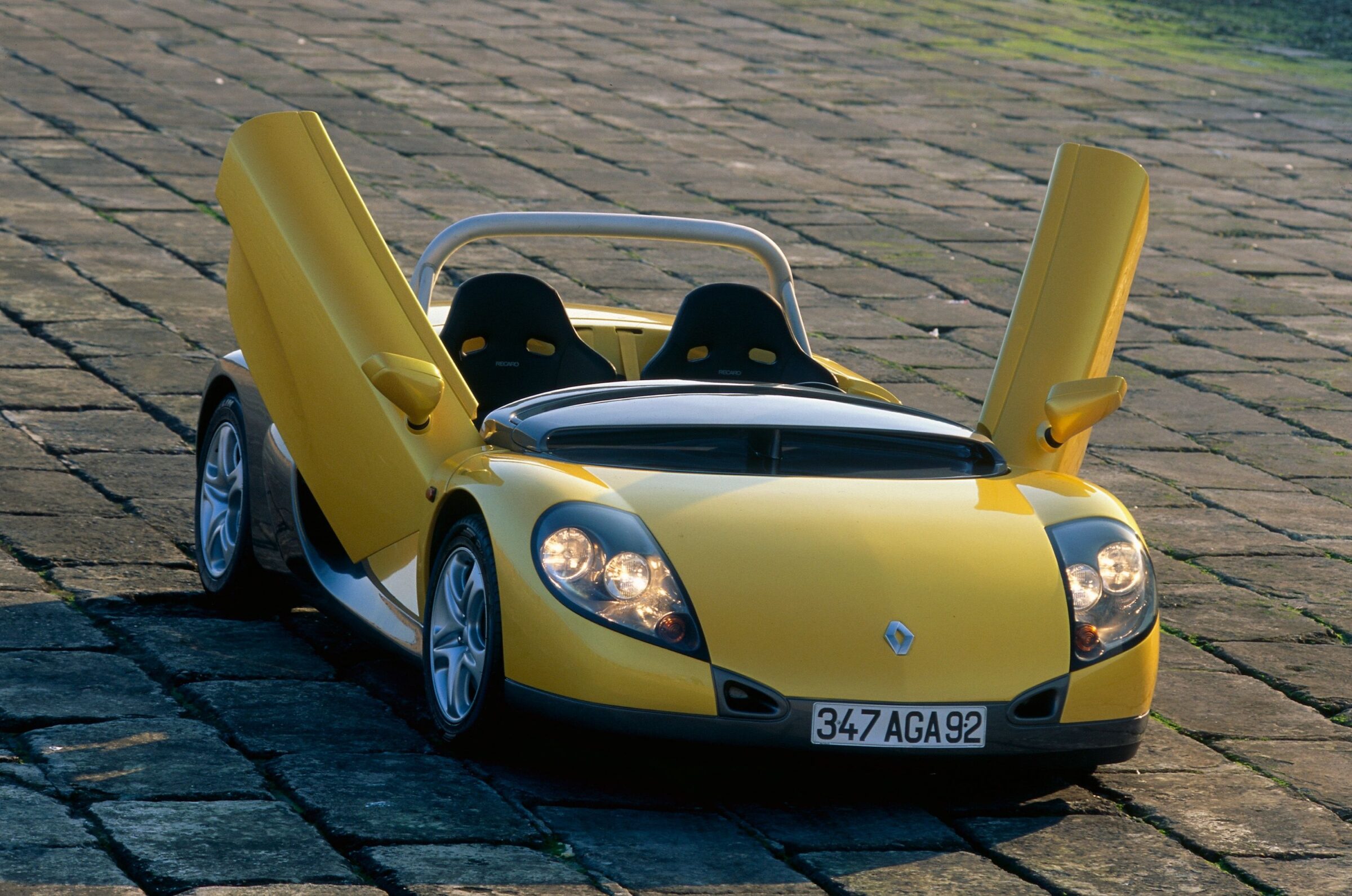Toyota-Shelby 2000GT
We have already reported a few times on the first Japanese supercar, the Toyota 2000GT. But this time it is a special example of this series in many respects. Behind the chassis number MF10-10001 hides the first ever built pre-production car of the 2000GT. Toyota initially kept the car, originally painted in Solar Red, for promotional purposes. For this, it was finally sent to the USA, where the sports car was to be offered as one of the first Toyota models. The RHD car was exhibited at several car shows over there. When this time was over and the 2000GT was available as left-hand drive, MF10-10001 was handed over to Akiri Miki. As a Japanese manager in the USA, he dreamed of racing the car to make the brand and the sports car even better known. Back home, Toyota fielded a few pre-production 2000GTs in motorsports between 1965 and 1967. Now racing successes were to follow in the C category of the American SCCA.
Racing successes with Carroll Shelby
Competitors such as Datsun, Triumph, Lotus and Porsche were already competing there. Originally, Peter Brock’s team was to build the racing version of the 2000GT. However, Carroll Shelby got wind of Toyota’s plans and convinced those responsible of his competence. He received the three pre-series cars with the chassis number MF10-10001, MF10-10005 and MF10-10006. Under the direction of his technician Rich Erickson, they became veritable race cars. For this purpose, former Honda Formula 1 driver Ronnie Bucknum was given numerous test laps with the unmodified car in Riverside to determine strengths and weakness. The cars were then fitted with Girling calipers, Koni adjustable shock absorbers and Halibrand magnesium wheels with center locks. These were fitted with Goodyear racing tires. The drivetrain was also upgraded with a differential cooler, a modified oil pan, three Weber twin carburetors and a new exhaust system.
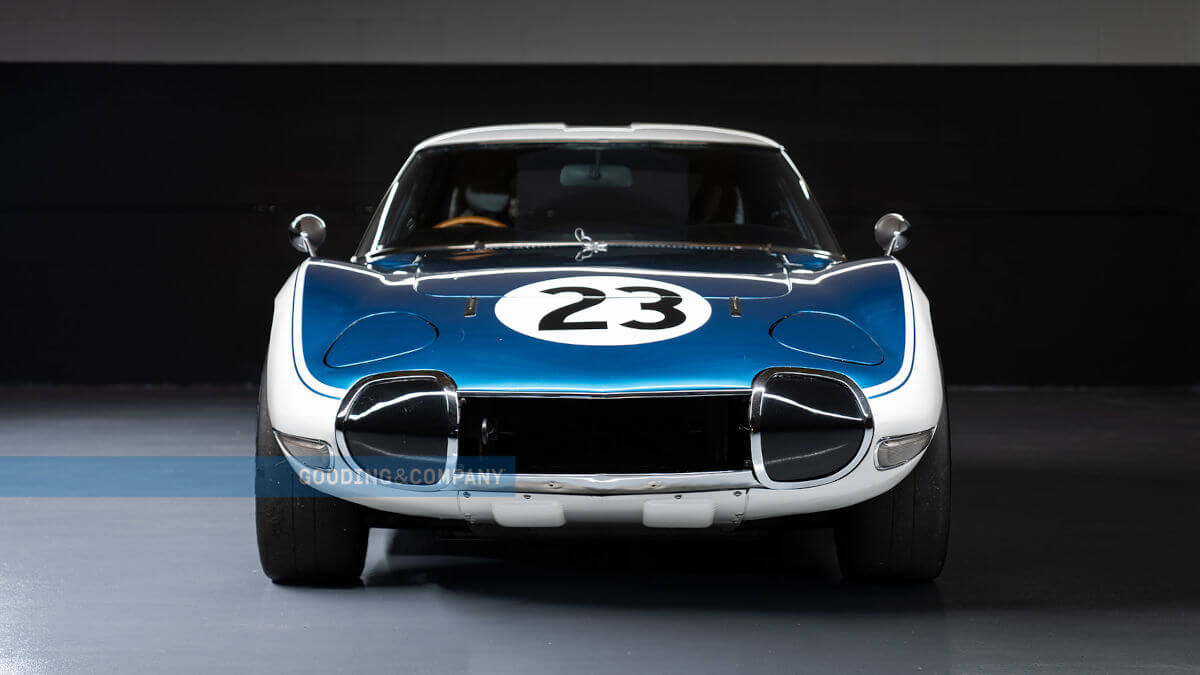





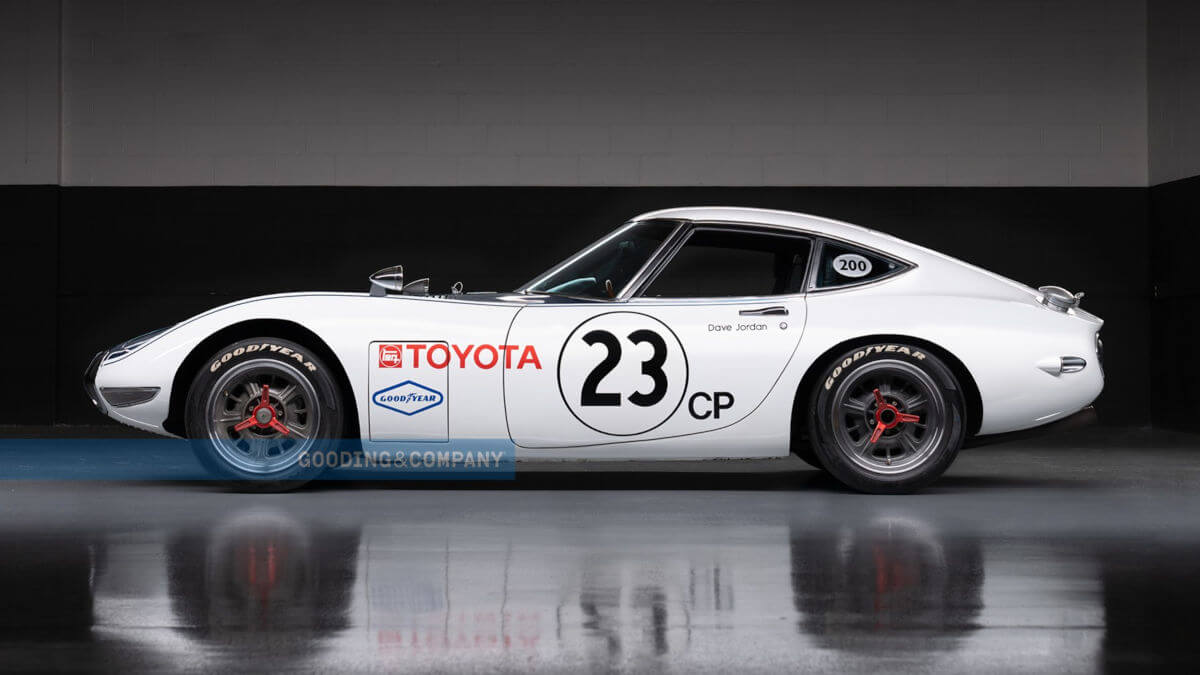









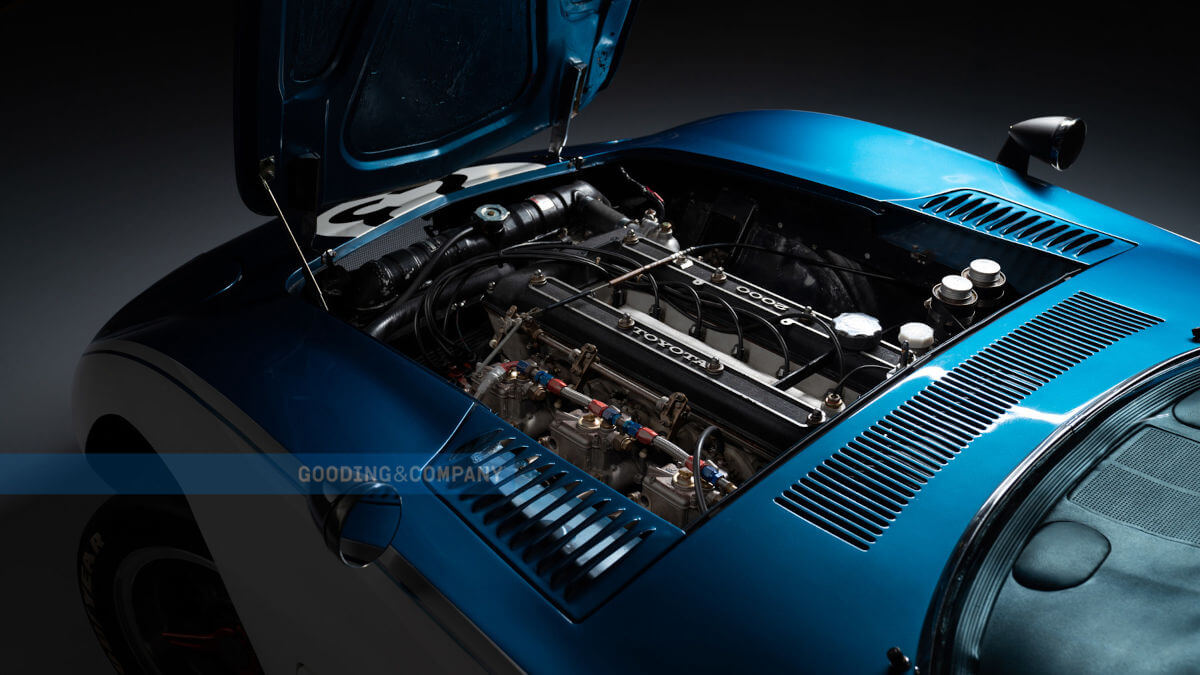





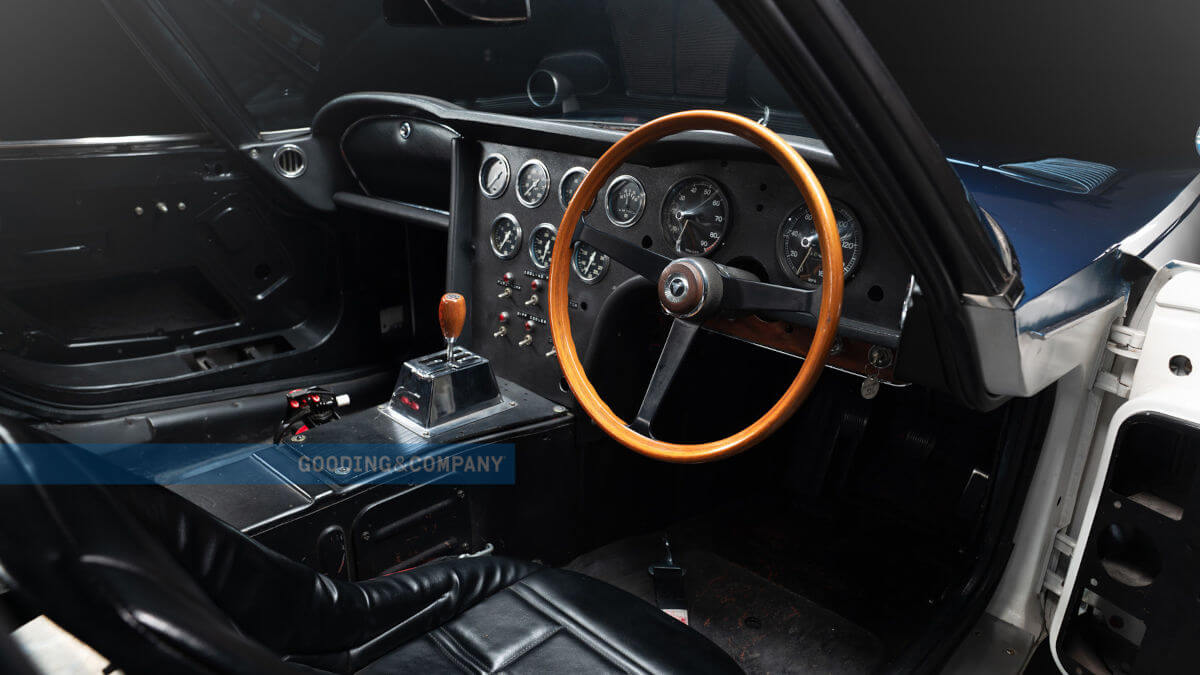

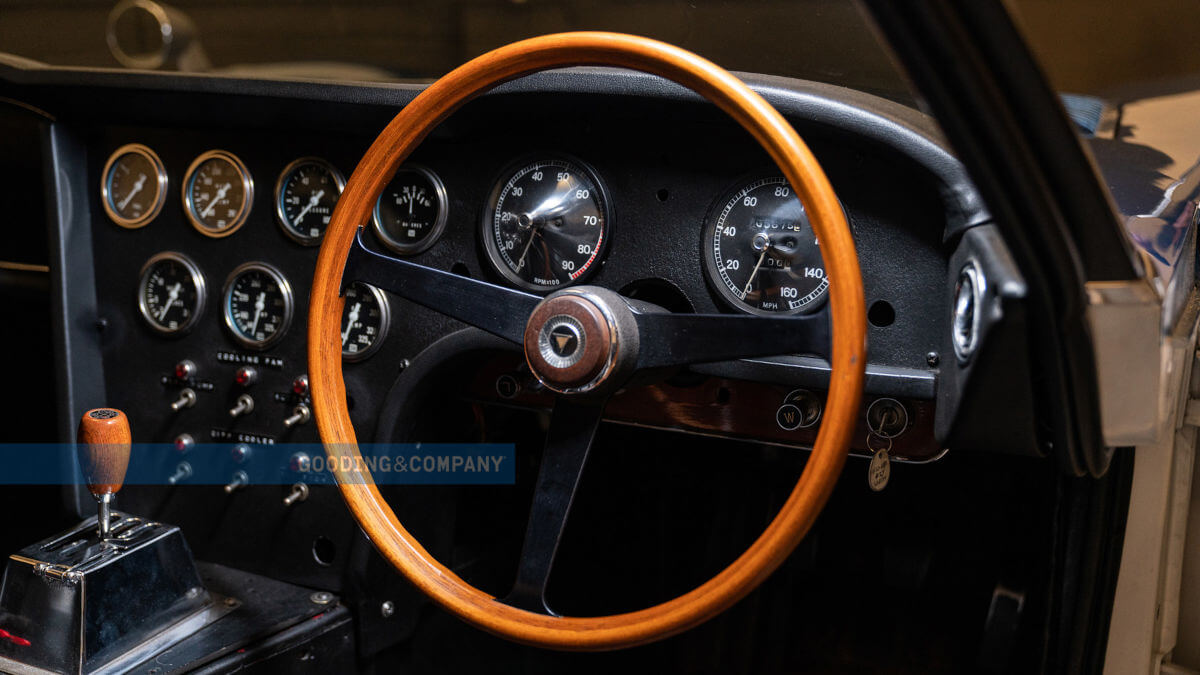





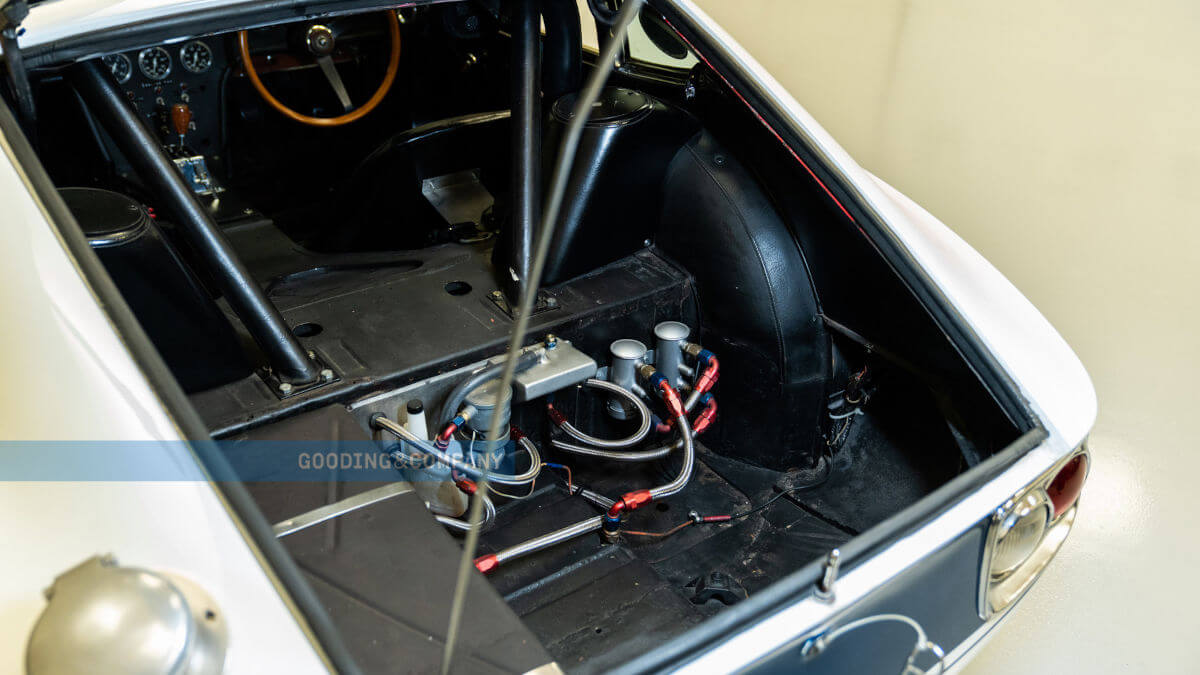







Fourth place in 1968 SCCA championship
Where rosewood shines from the dashboard of the standard 2000GT, the racing version uses black anodized aluminium. Two large and seven smaller round instruments from Stewart-Warner display all the important information to the driver. On top of the transmission tunnel sits an elevation for the open gearshift gate, somewhat reminiscent of Ferrari. Even then, it was common practice to add a rollbar and four-point harnesses to provide more safety for the driver. In the fall of 1967, Shelby asked the SCCA to announce the participation of the 2000GT for 1968. The three cars were ready for action in December 1967, with MF10-10001 designated as a test and backup car. With Dave Jordan and Scooter Patrick at the wheel of MF10-10005 and MF10-10006, four wins, eight second places and six third places were achieved in 1968. This was enough for fourth place in Category C of the SCCA championship. For the following year, Toyota decided to develop a Group 7 prototype for the CanAm championship and therefore ended its involvement with Shelby.
Auction at Gooding & Company
Although they failed to win the SCCA championship, they had achieved their goal of making the 2000GT known in the United States. Therefore, Toyota used shots of the race cars in the brochures as well. MF10-10006 went back to Japan, where it became a replica of the crashed record car. Instead, they painted MF10-10001 in the colors of Dave Jordan’s race car, including race number 23. Afterwards it was displayed at Toyota Houston and at Toyota’s North American headquarters in California. Finally MF10-10001 was sold to the car collector Jeff Lewis in Newport Beach. In 1980 the current owner took over the car and had it completely restored in his workshop. It helped that MF10-10005 was being repaired in the same shop at times, so they were able to get measurements and data. Since then this special 2000GT could be seen at various events up to the Goodwood Festival of Speed 2004. Now Gooding & Company is auctioning it and expects between US$ 2,750,000 and US$ 3,000,000.
Images: Gooding & Company


